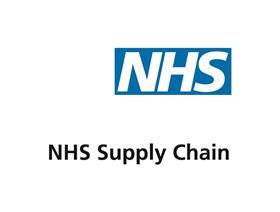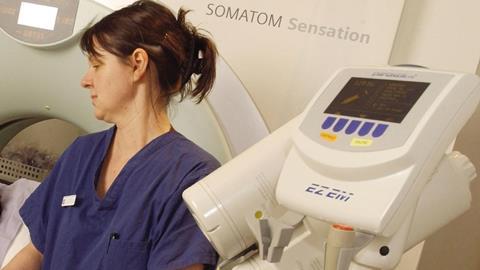Better management of big items such as CT scanners could save hundreds of millions. But, in an NHS that does not even know the value of its assets, there is a long way to go, says Daloni Carlisle
It is often said that the workforce is the NHS’s biggest asset. While that is true, NHS trusts should not forget the billions of pounds tied up in other assets including its capital medical equipment.

Yet this is precisely what too many seem to do – or at least do not consider the whole picture of how workforce, equipment and strategic goals fit together.
Asset management
Where industries such as oil and gas, energy or the railways take an integrated approach to asset management, the NHS has for the most part yet to get on board the asset management train. It’s one that could help contribute to making the service financially sustainable.
As Andy Brown, managing director for capital solutions for NHS Supply Chain, says: “We know the NHS is in financial crisis. Asset management is not going to solve that but it could make a significant contribution.”
David McKeown is chief executive of the Institute of Asset Management, a global leader in asset management in industry. Its work developing standards forms the basis of the now international standard for asset management, ISO 55000.
Recently, he has been working with the NHS, helping NHS Supply Chain to bring asset management thinking to the NHS.
“Asset management is not all about funding the big reference machine. It is also down to the human behaviours that make the best use of it”
As an outsider, he sees a challenging environment in the NHS. Citing a CT scanner, he explains how an asset management approach might help get the most from this expensive and vital kit.
On one side is the management of the equipment itself. On the other is the human resource part.
This goes beyond the radiologists and radiographers to include the whole system. “If you don’t have the porters to take patients to the CT scanner, the scanner can lie idle,” he explains.
“Asset management is not all about funding the big reference machine. It is also down to the human behaviours that make the best use of it.”
He thinks budgeting in the NHS does not support managing the asset as a whole. “It seems that when it comes to medical equipment, the NHS can only budget for the capital expenditure and that is a very poor approach,” he says.
Mr Brown is keen to see the NHS adopt asset management as a formal discipline. “It is all about aligning your assets to achieve more efficient healthcare,” he says.
“Many companies see this as critical to their profitability and long term survival.”
Yet in the NHS, this thinking does not seem to have permeated. For a start, no one knows the value of the medical asset base in the NHS – let alone how much might need replacing over the next five years.
Mr Brown says: “We [NHS Supply Chain] are probably in the best position to estimate the value of the medical equipment owned by the NHS and we think it is in excess of £5bn. But no one really knows.
”Individual trusts may know, but I would argue that very few know accurately.
“If I was to ask the chief executive of Esso about the value of the company’s oil rigs, he would be able to point to the balance sheet.”
Making an inventory
NHS Supply Chain is helping trusts take the first steps towards asset management (see case study, below). That will start by making an inventory of what a trust owns, what needs replacing and when, then working with clinicians and procurement side by side on a five year strategy.
It’s not quite asset management as Mr McKeown or Esso’s chief executive know it, but it is a start.
Mr Brown says: “No trust has enough money to replace all the medical equipment assets that need replacing in any one year. A risk-based approach can be constructed that lowers the overall risk for the trust.
”An asset management strategy allows trusts to take better informed decisions on what to replace and when.”
NHS Supply Chain is also looking at the bigger picture and last year commissioned a report from York Health Economics Consortium looking at the clinical benefits of using the latest techniques in imaging and radiotherapy treatment. YHEC associate director Nick Hex led this research.
It highlighted not just risks – if your linear accelerator breaks down, a queue will build up in the radiotherapy department, for example – but also opportunities.
’An asset management strategy allows trusts to take better informed decisions on what to replace and when’
A newer MRI scanner might increase patient throughput or deliver better images that support more accurate diagnoses. A shoulder operation delivered using a modern ultrasound machine to visualise the progress can be done as a day case operation instead of an inpatient procedure.
Mr Brown says the report highlighted how and where medical equipment could contribute to improved pathways in radiotherapy. “In layman’s terms, the old equipment is like firing a blunderbuss,” he says.
“It does the job but there’s damage to the surrounding tissue and then follow up care is needed. The modern accelerators are like a sniper’s rifle so the patient needs less care and is less damaged. The patient pathway is cheaper.”
Bigger commitment
The YHEC report went on to consider constraints beyond the capital funding. Mr Hex says: “We were able to show that more modern scanners can achieve higher throughput but productivity is more complex.
”There are also the contextual issues, especially when it comes to seven day working. The constraints then are having staff to do the scans and capacity in the hospital to manage the throughput.
“It is a whole system thing that requires a bigger commitment than just allocating capital expenditure to buy a new scanner or linear accelerator.”
And it is commitment to this new approach – to asset management – that Mr Brown wants to see in the NHS: where procurement, finance and clinical leaders agree about the assets and plan maintenance and replacement with a five to 10 year horizon that includes not just the capital expenditure but the whole asset.
Mr McKeown says that asset management can deliver not only operational efficiencies but also open up new ways of working.
“I think it would be possible to take 25 per cent of the cost base out of the assets and provide better equipment at the same time”
“Very few airlines own their engines,” he says. “Rolls Royce now sells engine power. It is up to Rolls Royce to maintain and service and replace the engines while the airlines pay them a fee for this whole service.”
Engines can be standardised and designed for maintainability, delivering savings in the process. “That is a very relevant example for the NHS.”
Mr Brown is arguing at high level for the NHS to adopt asset management. He says: “We need to unlock this. I think it would be possible to take 25 per cent of the cost base out of the assets and provide better equipment at the same time.”
Rotherham hammers out five year strategy
Rotherham Foundation Trust is working through a programme to align its medical equipment renewal programme with its overall strategy. It’s not quick and it’s not simple, says director of finance Simon Sheppard.
But he hopes it will take the trust into the new territory of clinical, operational and financial sustainability.
“Many provider organisations have an annual programme for medical equipment,” he says. “What we have acknowledged at Rotherham is that we need to be looking at medical equipment strategically over five years.”
The starting point is making sure the trust has oversight of all its medical equipment, from the big ticket items such as MRI scanners, right down to the equipment on the ward such as pulse oximeters. “We need to make sure we have 100 per cent sign-off of all the capital and its associated revenue and that’s where we are working with NHS Supply Chain at the moment,” says Mr Sheppard.
“We are in the process of working with all our clinical departments to update our asset register.”
Managing expectations
It’s not an easy job and requires persistence, nudging busy operational managers to provide the all-important information.
With the asset register in place, finance, procurement and clinical staff will be in a position to assess the assets.
What needs replacing and when? Where are the inconsistencies that could usefully be standardised to reduce, for example, the cost of consumables or training? Where is there innovation that could impact on service efficiency and patient experience?
“We may have an ultrasound that is brand new and one that is 20 years old,” he says by way of example. “We need to understand that and develop a replacement process that also factors in innovation. That’s why clinical engagement is so important. They know what’s coming on to the market and what is at the cutting edge of research.”
With a strategy that meets clinical objectives in place, the finance team can then start to look at options for financing, whether by using the annual capital allocation, charitable donations or a managed service.
“There will always be a need to manage expectations,” says Mr Sheppard.
“But we have clinical buy-in for the audit and where we need to get to. As long as we are transparent and treat our clinicians with respect, then they will be able to see the benefits of the long term strategy.”



























No comments yet